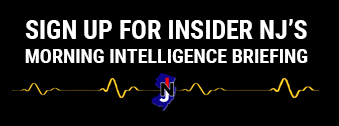MONMOUTH NATIONAL: ONE IN FIVE STILL SHUN VACCINE

NATIONAL: ONE IN FIVE STILL SHUN VACCINE
Biden gets high marks for Covid response
West Long Branch, NJ – About 1 in 5 American adults remain unwilling to get the Covid vaccine, even as more people are getting the shot. The Monmouth (“Mon-muth”) University Poll also finds that President Joe Biden continues to get positive job ratings overall as well as high marks for his handling of the pandemic. Nearly half of the public feels the country is heading in the right direction, which is an eight-year high in Monmouth’s national polling.
A rapid increase in Covid vaccinations over past month has not made much of a dent in the number of Americans who remain opposed to getting the shot. Currently, 21% of Americans claim they will never get the vaccine if they can avoid it, which is down a statistically insignificant 3 points from prior polls (24% in both January and March). However, the number who say they want to let other people get it first to see how it goes before getting it themselves has dropped – from 21% in March to 12% now. [Note: Interviewing for this poll was completed before federal authorities called for a pause in administering the Johnson & Johnson vaccine.]
“The number of people who have been skittish about the vaccine has dropped as more Americans line up for the shot, but the hard core group who want to avoid it at all costs has barely budged. The recent news about J&J vaccines is probably not going to help that situation. On the other hand, it might not make it all that much worse since much of this reluctance is really ingrained in partisan identity,” said Patrick Murray, director of the independent Monmouth University Polling Institute.
Partisanship remains the main distinguishing factor among those who want to avoid the vaccine altogether, with 43% of Republicans versus just 5% of Democrats saying this. Currently, 22% of independents say they want to avoid getting the vaccine altogether. Demographically, adults under age 65 (25%) continue to be more likely than seniors (11%) to rule out getting the vaccine. There are no discernable differences by race, though, with similar number of whites (22%) and people of color (20%) saying they will avoid getting the vaccine if they can.
Just over half (51%) of the adult population reports having already received at least one Covid jab and another 14% say they will get the vaccine as soon as they are allowed. Democrats (67%) are more likely than independents (47%) and Republicans (36%) to report being vaccinated. More white Americans (54%) than people of color (45%) report having already received a shot.
In other poll findings, Biden currently holds a job rating of 54% approve and 41% disapprove. His rating last month stood at 51% to 42%. The president gets a 95% approval rating from Democrats and an 88% disapproval rating among Republicans. Independents are divided at 47% approve and 43% disapprove.
Biden gets positive reviews for his handling of the coronavirus outbreak specifically, with 62% saying he has done a good job and 31% saying he has done a bad job. This rating stood at 57%–31% in March and 58%–23% in late January. Donald Trump’s good job ratings on handling the pandemic started out at 50% during the initial onset but quickly dropped; landing at 34% by the time he left office.
“Goodwill for the president remains high, particularly for his response to the pandemic,” said Murray.
Just over 6 in 10 (63%) Americans support the $1.9 trillion Covid stimulus package enacted last month, while 34% oppose it. These overall numbers are similar to when the bill was being considered by Congress last month (62% support and 34% oppose), but strong support for the package has ticked up to 43% from 35% in March. Overall support for the plan comes from 96% of Democrats and 63% of independents, but just 23% of Republicans.
The poll also finds the job rating for Congress at 35% approve and 56% disapprove and views of the nation’s trajectory at 46% who say it is headed in the right direction and 50% who say it is on the wrong track. The Congressional approval rating matches the prior high recorded by Monmouth (35% in January 2021) in national polling going back to 2013. The percentage who say the country is headed in the right direction has hit an eight-year high. This positive number ranged between 18% and 40% during the prior two presidential administrations.
“It may be less than a majority, but the number of people who feel positive about the nation’s trajectory is easily at its highest point in a long time,” said Murray.
In other Covid-related poll ratings, the public gives high marks for how their state governors have handled the pandemic (62% good job and 34% bad job). This good job number had hovered between 56% and 61% since August, following a period where it was in the high 60s to low 70s.
The poll records a split decision on how the American public has been dealing with the outbreak – 43% good job and 44% bad job. However, this result is a marked improvement from the net negative ratings registered from late June through last month. The low mark for ratings of how the American public has handled the outbreak was 26% good job and 62% bad job in August. The high point was 51% good job and 33% bad job in May.
The Monmouth University Poll was conducted by telephone from April 8 to 12, 2021 with 800 adults in the United States. The question results in this release have a margin of error of +/- 3.5 percentage points. The poll was conducted by the Monmouth University Polling Institute in West Long Branch, NJ.
QUESTIONS AND RESULTS
(* Some columns may not add to 100% due to rounding.)
1. Do you approve or disapprove of the job Joe Biden is doing as president?
|
TREND: |
April |
March |
Jan. |
|
Approve |
54% |
51% |
54% |
|
Disapprove |
41% |
42% |
30% |
|
(VOL) No opinion |
5% |
8% |
16% |
|
(n) |
(800) |
(802) |
(809) |
2. Do you approve or disapprove of the job the U.S. Congress is doing?
|
TREND: |
April |
March |
Jan. |
|
Approve |
35% |
30% |
35% |
|
Disapprove |
56% |
59% |
51% |
|
(VOL) No opinion |
9% |
11% |
14% |
|
(n) |
(800) |
(802) |
(809) |
|
TREND: Continued |
Nov. |
Early June |
May |
April |
Feb. |
Jan. |
Dec. |
Nov. |
Sept. |
Aug. |
June |
May |
April |
March |
Jan. |
|
Approve |
23% |
22% |
32% |
32% |
20% |
24% |
22% |
23% |
21% |
17% |
19% |
20% |
24% |
23% |
18% |
|
Disapprove |
64% |
69% |
55% |
55% |
69% |
62% |
65% |
64% |
68% |
71% |
69% |
71% |
62% |
68% |
72% |
|
(VOL) No opinion |
13% |
9% |
13% |
13% |
11% |
14% |
13% |
13% |
11% |
13% |
12% |
9% |
14% |
9% |
10% |
|
(n) |
(810) |
(807) |
(808) |
(857) |
(902) |
(903) |
(903) |
(908) |
(1,161) |
(800) |
(751) |
(802) |
(801) |
(802) |
(805) |
|
TREND: Continued |
Nov. |
Aug. |
June |
April |
March |
Jan. |
Dec. |
Sept. |
Aug. |
July |
May |
March |
Jan. |
|
Approve |
23% |
17% |
19% |
17% |
18% |
21% |
16% |
17% |
18% |
19% |
19% |
25% |
23% |
|
Disapprove |
63% |
69% |
67% |
71% |
72% |
68% |
65% |
69% |
69% |
70% |
68% |
59% |
66% |
|
(VOL) No opinion |
14% |
14% |
14% |
12% |
11% |
11% |
19% |
15% |
13% |
11% |
13% |
16% |
11% |
|
(n) |
(802) |
(805) |
(806) |
(803) |
(803) |
(806) |
(806) |
(1,009) |
(805) |
(800) |
(1,002) |
(801) |
(801) |
|
TREND: Continued |
Sept. |
Aug. |
June |
March |
Jan. |
Dec. |
Oct. |
Sept. |
Aug. |
July |
June |
April |
Jan. |
Dec. |
July |
|
Approve |
15% |
14% |
17% |
22% |
17% |
16% |
17% |
19% |
18% |
18% |
19% |
21% |
18% |
17% |
14% |
|
Disapprove |
77% |
78% |
76% |
68% |
73% |
73% |
71% |
71% |
72% |
69% |
71% |
67% |
70% |
73% |
76% |
|
(VOL) No opinion |
8% |
9% |
7% |
10% |
10% |
10% |
12% |
11% |
11% |
12% |
10% |
12% |
11% |
11% |
10% |
|
(n) |
(802) |
(803) |
(803) |
(1,008) |
(1,003) |
(1,006) |
(1,012) |
(1,009) |
(1,203) |
(1,001) |
(1,002) |
(1,005) |
(1,003) |
(1,008) |
(1,012) |
* Registered voters
3. Would you say things in the country are going in the right direction, or have they gotten off on the wrong track?
|
TREND: |
April |
March |
Jan. |
Nov. |
Early Sept. |
Aug. |
Late June |
Early June |
May |
April |
March |
Feb. |
Jan. |
|
Right direction |
46% |
34% |
42% |
26% |
27% |
22% |
18% |
21% |
33% |
30% |
39% |
37% |
37% |
|
Wrong track |
50% |
61% |
51% |
68% |
66% |
72% |
74% |
74% |
60% |
61% |
54% |
57% |
56% |
|
(VOL) Depends |
2% |
4% |
3% |
4% |
4% |
4% |
5% |
4% |
4% |
5% |
4% |
6% |
6% |
|
(VOL) Don’t know |
2% |
2% |
4% |
2% |
3% |
2% |
3% |
1% |
3% |
5% |
3% |
1% |
1% |
|
(n) |
(800) |
(802) |
(809) |
(810) |
(867) |
(868) |
(867) |
(807) |
(808) |
(857) |
(851) |
(902) |
(903) |
|
TREND: Continued |
Dec. |
Nov. |
Sept. |
Aug. |
June |
May |
April |
March |
Nov. |
Aug. |
June |
April |
March |
Jan. |
|
Right direction |
32% |
30% |
30% |
28% |
31% |
29% |
28% |
29% |
35% |
35% |
40% |
33% |
31% |
37% |
|
Wrong track |
56% |
61% |
61% |
62% |
62% |
63% |
62% |
63% |
55% |
57% |
53% |
58% |
61% |
57% |
|
(VOL) Depends |
8% |
7% |
6% |
8% |
6% |
4% |
7% |
6% |
7% |
6% |
3% |
5% |
6% |
3% |
|
(VOL) Don’t know |
4% |
2% |
2% |
2% |
2% |
3% |
3% |
2% |
3% |
3% |
3% |
4% |
1% |
3% |
|
(n) |
(903) |
(908) |
(1,161) |
(800) |
(751) |
(802) |
(801) |
(802) |
(802) |
(805) |
(806) |
(803) |
(803) |
(806) |
|
TREND: Continued |
Dec. |
Aug. |
May |
March |
Jan. |
Aug. |
Oct. |
July |
June |
April |
Dec. |
July |
|
Right direction |
24% |
32% |
31% |
35% |
29% |
30% |
24% |
28% |
23% |
27% |
23% |
28% |
|
Wrong track |
66% |
58% |
61% |
56% |
65% |
65% |
66% |
63% |
68% |
66% |
69% |
63% |
|
(VOL) Depends |
7% |
4% |
5% |
4% |
4% |
2% |
6% |
5% |
5% |
5% |
5% |
5% |
|
(VOL) Don’t know |
3% |
5% |
3% |
5% |
2% |
3% |
4% |
3% |
3% |
2% |
3% |
4% |
|
(n) |
(806) |
(805) |
(1,002) |
(801) |
(801) |
(803) |
(1,012) |
(1,001) |
(1,002) |
(1,005) |
(1,008) |
(1,012) |
* Registered voters
4. As you may know, Congress recently passed a $1.9 trillion stimulus plan in response to the coronavirus pandemic. In general, do you support or oppose this plan? [Is that strongly or somewhat (support/oppose)?]
|
TREND: |
April |
March |
|
Strongly support |
43% |
35% |
|
Somewhat support |
20% |
27% |
|
Somewhat oppose |
10% |
11% |
|
Strongly oppose |
24% |
23% |
|
(VOL) Don’t know |
2% |
4% |
|
(n) |
(800) |
(802) |
* March 2021 poll asked about the plan before Congress passed it.
5. Please tell me if each of the following has done a good job or bad job dealing with the coronavirus outbreak. [ITEMS WERE ROTATED]
|
TREND: |
Good Job |
Bad Job |
(VOL) Mixed, depends |
(VOL) Don’t know |
(n) |
|
President Biden |
62% |
31% |
3% |
3% |
(800) |
|
— March 2021 |
57% |
31% |
3% |
8% |
(802) |
|
— January 2021 |
58% |
23% |
5% |
15% |
(809) |
|
|
|
|
|
|
|
|
Your state’s governor |
62% |
34% |
3% |
2% |
(800) |
|
— March 2021 |
56% |
38% |
3% |
2% |
(802) |
|
— January 2021 |
57% |
38% |
3% |
2% |
(809) |
|
— Early September 2020 |
61% |
35% |
3% |
1% |
(867) |
|
— August 2020 |
57% |
35% |
5% |
3% |
(868) |
|
— Late June 2020 |
65% |
28% |
5% |
2% |
(867) |
|
— Early June 2020 |
67% |
28% |
3% |
1% |
(807) |
|
— May 2020 |
73% |
22% |
3% |
2% |
(808) |
|
— April 2020 |
72% |
21% |
4% |
3% |
(857) |
|
— March 2020 |
72% |
18% |
4% |
6% |
(851) |
|
|
|
|
|
|
|
|
The American public |
43% |
44% |
10% |
4% |
(800) |
|
— March 2021 |
35% |
53% |
11% |
1% |
(802) |
|
— January 2021 |
32% |
60% |
6% |
2% |
(809) |
|
— Early September 2020 |
31% |
57% |
10% |
2% |
(867) |
|
— August 2020 |
26% |
62% |
11% |
1% |
(868) |
|
— Late June 2020 |
28% |
59% |
11% |
3% |
(867) |
|
— Early June 2020 |
46% |
43% |
8% |
2% |
(807) |
|
— May 2020 |
51% |
33% |
13% |
2% |
(808) |
|
— April 2020 |
38% |
48% |
12% |
2% |
(857) |
|
— March 2020 |
38% |
45% |
14% |
3% |
(851) |
|
|
|
|
|
|
|
6. Have you received at least one dose of Covid vaccine, or not? [If not:] Do you plan to get the Covid vaccine as soon as you are allowed, will you let other people get it first to see how it goes, or is it likely you will never get the vaccine if you can avoid it?
|
TREND: |
April |
March |
Jan. |
|
Already received vaccine |
51% |
16%* |
6%* |
|
As soon as allowed |
14% |
38% |
50% |
|
See how it goes |
12% |
21% |
19% |
|
Likely will never get vaccine |
21% |
24% |
24% |
|
(VOL) Don’t know |
2% |
1% |
2% |
|
(n) |
(800) |
(802) |
(809) |
* January/March 2021 polls did not specifically ask if person already got the vaccine, but included it as a volunteered response.
[Q7-32 held for future release.]
METHODOLOGY
The Monmouth University Poll was sponsored and conducted by the Monmouth University Polling Institute from April 8 to 12, 2021 with a national random sample of 800 adults age 18 and older. This includes 278 contacted by a live interviewer on a landline telephone and 522 contacted by a live interviewer on a cell phone, in English. Telephone numbers were selected through a mix of random digit dialing and list-based sampling. Landline respondents were selected with a modified Troldahl-Carter youngest adult household screen. Monmouth is responsible for all aspects of the survey design, data weighting and analysis. The full sample is weighted for region, age, education, gender and race based on US Census information (ACS 2018 one-year survey). Data collection support provided by Braun Research (field), Dynata (RDD sample), and Aristotle (list sample). For results based on this sample, one can say with 95% confidence that the error attributable to sampling has a maximum margin of plus or minus 3.5 percentage points (unadjusted for sample design). Sampling error can be larger for sub-groups (see table below). In addition to sampling error, one should bear in mind that question wording and practical difficulties in conducting surveys can introduce error or bias into the findings of opinion polls.
|
DEMOGRAPHICS (weighted) |
|
Self-Reported |
|
23% Republican |
|
45% Independent |
|
32% Democrat |
|
|
|
48% Male |
|
52% Female |
|
|
|
30% 18-34 |
|
33% 35-54 |
|
37% 55+ |
|
|
|
64% White |
|
12% Black |
|
16% Hispanic |
|
8% Asian/Other |
|
|
|
70% No degree |
|
30% 4 year degree |
|
MARGIN OF ERROR |
|||
|
unweighted sample |
moe |
||
|
TOTAL |
|
800 |
3.5% |
|
REGISTERED VOTER |
Yes |
743 |
3.6% |
|
No |
57 |
13.0% |
|
|
SELF-REPORTED PARTY ID |
Republican |
173 |
7.5% |
|
Independent |
354 |
5.2% |
|
|
Democrat |
263 |
6.1% |
|
|
IDEOLOGY |
Liberal |
200 |
6.9% |
|
Moderate |
302 |
5.6% |
|
|
Conservative |
281 |
5.9% |
|
|
GENDER |
Male |
400 |
4.9% |
|
Female |
400 |
4.9% |
|
|
AGE |
18-34 |
144 |
8.2% |
|
35-54 |
245 |
6.3% |
|
|
55+ |
401 |
4.9% |
|
|
AGE 65 |
18-64 |
512 |
4.3% |
|
|
65+ |
263 |
6.1% |
|
CHILDREN IN HOME |
Yes |
170 |
7.5% |
|
No |
624 |
3.9% |
|
|
RACE |
White, non-Hispanic |
588 |
4.1% |
|
Other |
192 |
7.1% |
|
|
COLLEGE GRADUATE |
No degree |
424 |
4.8% |
|
4 year degree |
365 |
5.1% |
|
|
WHITE COLLEGE |
White, no degree |
313 |
5.5% |
|
White, 4 year degree |
269 |
6.0% |
|
|
INCOME |
<$50K |
307 |
5.6% |
|
$50 to <$100K |
236 |
6.4% |
|
|
|
$100K+ |
218 |
6.6% |
Crosstabs may be found in the PDF file on the report webpage: https://www.monmouth.edu/polling-institute/reports/monmouthpoll_US_041421/







